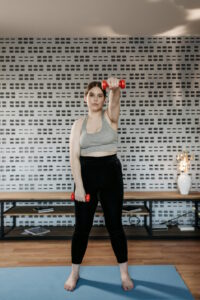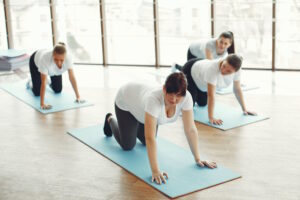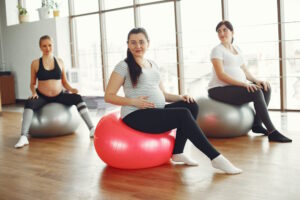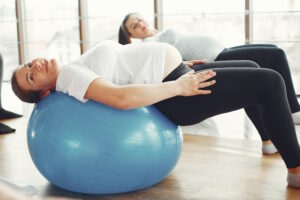
Pregnancy is a beautiful and transformative journey, but it can also come with various physical challenges and discomforts. Many expectant mothers turn to Pilates as a holistic approach to staying healthy and preparing their bodies for childbirth. In this enlightening piece, we will explore real-life success stories of women who experienced the benefits of Pilates during pregnancy. Through their inspiring journeys, we will uncover how Pilates can be a valuable companion during this special time.
Does Pilates Help with Pregnancy?
Absolutely! Pilates can be a valuable tool during pregnancy for various reasons:
1. Core Strength: Pilates focuses on strengthening the core muscles, which can help support the growing uterus, alleviate back pain, and maintain overall stability.
2. Posture Improvement: Pregnancy often alters posture due to the shifting center of gravity. Pilates emphasizes proper alignment and can help expectant mothers maintain good posture.
3. Pelvic Floor Support: Pilates includes exercises that engage and strengthen the pelvic floor muscles, reducing the risk of incontinence and supporting the baby’s descent during labor.
4. Mind-Body Connection: Pilates fosters a strong mind-body connection, promoting relaxation and reducing stress and anxiety commonly associated with pregnancy.
Why Pregnant Women Should Do Pilates
Real-life success stories exemplify why expectant mothers should consider Pilates:
1. Back Pain Relief: Pilates can alleviate back pain caused by the added weight of the baby. It strengthens the back muscles and encourages proper alignment.
2. Enhanced Core Strength: A strong core supports the growing uterus, reducing strain on the lower back and pelvis.
3. Improved Balance and Coordination: Pilates exercises enhance balance and coordination, which can be particularly beneficial as the body undergoes physical changes.
4. Preparation for Labor: Pilates helps prepare the body for labor by strengthening the pelvic floor and deep core muscles, facilitating a smoother delivery.
How Many Times a Week Should You Do Pilates When Pregnant?
The frequency of Pilates during pregnancy varies from person to person. In general, it’s advisable to aim for at least 2-3 sessions per week. However, it’s crucial to consult with a qualified prenatal Pilates instructor and your healthcare provider to determine a safe and suitable routine based on your individual needs and physical condition.
What Exercise Is Better for Pregnancy: Yoga or Pilates?
Both yoga and Pilates offer benefits during pregnancy, and the choice ultimately depends on personal preferences and goals:
1. Pilates: Pilates focuses on core strength, posture, and controlled movements. It’s highly effective for improving stability, reducing back pain, and strengthening the pelvic floor muscles.
2. Yoga: Yoga emphasizes flexibility, relaxation, and mindfulness. It can help alleviate stress, promote relaxation, and enhance overall well-being.
Some women find a combination of both practices to be beneficial, attending prenatal Pilates classes for core strength and stability and prenatal yoga for flexibility and relaxation.
Real-Life Success Stories
Here are a couple of real-life success stories illustrating how Pilates helped women during pregnancy:
1. Casey’s Story: Casey, a first-time mother, struggled with back pain and discomfort during her pregnancy. She started prenatal Pilates sessions under the guidance of a certified instructor. Over time, her back pain diminished as her core and back muscles strengthened. Casey reported feeling more confident and comfortable throughout her pregnancy, and she believes Pilates played a significant role in her smooth labor and delivery.
2. Sarah’s Journey: Sarah, a seasoned Pilates enthusiast, continued her practice during her second pregnancy. With her instructor’s guidance, she modified her exercises as needed to accommodate her changing body. Sarah credited Pilates with helping her maintain her strength, flexibility, and mental well-being throughout her pregnancy. She felt better prepared physically and mentally for labor and delivery compared to her first pregnancy.
Summarizing the Answers
Real-life success stories from women who practiced Pilates during pregnancy underscore the numerous benefits of this exercise method. Pilates can help alleviate back pain, improve core strength, enhance posture, and prepare the body for labor. The choice between Pilates and yoga during pregnancy depends on personal preferences and goals, with some women finding a combination of both to be beneficial. Ultimately, Pilates can be a valuable companion on the journey to a healthy and comfortable pregnancy.








